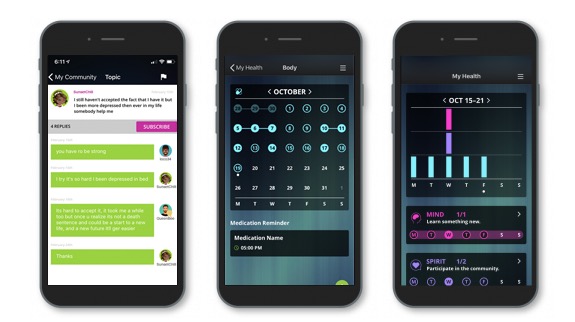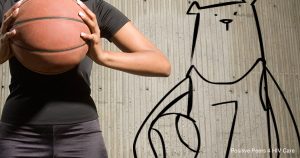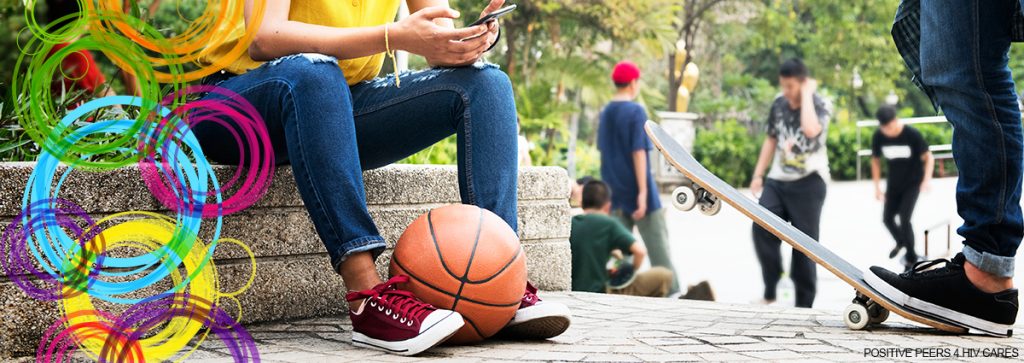
By: Jennifer McMillen Smith, LISW-S, HIV Social Worker at MetroHealth Medical Center and medically reviewed by Ann K. Avery, MD, Infectious Disease Physician at MetroHealth Medical Center
Some people go to a gym to get in shape. That’s cool if you’ve got the extra cash. But you don’t have to. Your body has everything you need to stay in shape without shelling out $50 a month and getting all sweaty in front of a bunch of strangers.
That’s good to know if you have HIV — because exercise is one of the best things you can do to help your meds fight the virus. But you know that already, so we won’t repeat it all here. But trust us: Every little bit of activity helps.
The worst thing you can do is sit around all day, watching TV or playing video games. The best is to get at least 60 minutes of exercise every day with a mix of cardio moves for your heart, resistance moves for your muscles, and flexibility moves for your joints and tendons.
Most likely, you’ll fall somewhere in the middle. If you can get just 30 minutes of activity in every day, you’re in much better shape than if you don’t do anything. It doesn’t have to cost you a penny.
Here are some ideas to try:
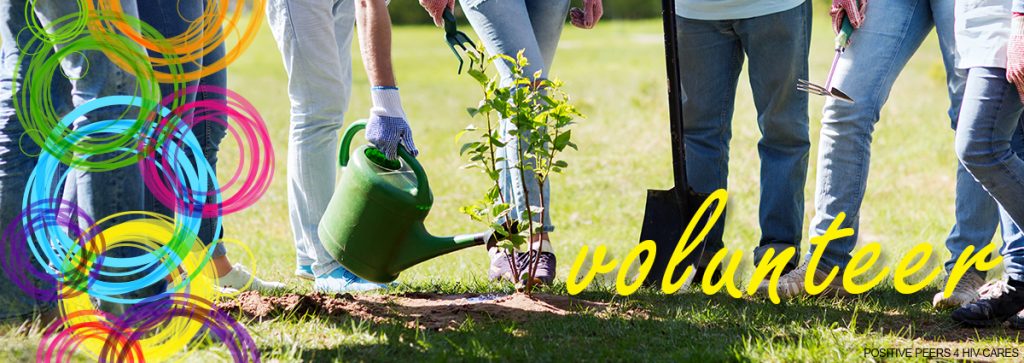
Volunteer to do stuff that requires physical activity
Is there a community garden in your neighborhood? Volunteer to help folks take care of it. Garden work requires a lot of squatting down, pushing and pulling, and lifting.
Local groups often do fund-raisers that involve walking, running, or bike riding. Help them organize the activities and manage them on the day of the event. Helping the local food bank or serving meals to the homeless requires you to stand up and walk around. It’s activity, and it helps.
Look for activities that require stuff like standing, walking, going up and down stairs, lifting boxes, and handing things to people. Doing good deeds for your community makes it all that much better.

Go for a nice long walk
Most people walk about 3 miles per hour. That’s a decent distance to walk instead of driving or taking the bus. If your job or doctor’s office is within 3 miles, start walking it (if the route is safe; not all streets have good sidewalks or paths to walk on). Try the walk in advance to see how long it takes — you don’t want to be late for work or miss your doctor’s appointment.
On your days off, extend your one-hour walk to 90 minutes, and try to work your way up to two hours. Find trails in the local parks, or walk around the running track at the local high school. Better yet, get out in nature and take a hike at Cuyahoga Valley National Park, which has over 125 miles of trails.
Websites like Meetup.com can help you find walking groups, so you don’t have to go it alone. These groups are great ways to meet new people, find out about their lives and maybe even get tips on career opportunities.
Need more ideas? See our blog post on free outdoor activities in Cleveland.
Come join our private, stigma-free, supportive community.
Health management tools with medication & appointment reminders.
Social networking in a community conversation & private chats.
Give yoga a try
Yoga requires safe forms of bending and lifting, both of which are great for your muscles, tendons, and joints. Yoga also boosts your immune system, helps with high blood pressure, and makes it easier to manage anxiety and depression.
Many cities provide community yoga classes. In Northeast Ohio, groups like North Coast Namasté conduct free summer sessions. Check out Fitt Cleveland’s article on free yoga options around the city.
Bear in mind that yoga requires specific techniques to make sure you don’t get injured. One way to get schooled on the right yoga moves is to check out a YouTube channel like Yoga with Adriene. You can also check out free yoga videos at the local library; just make sure you get them back to the library on time.
Yoga lets you get your mind and body in sync. Add some meditation every day and you’ll go a long way toward staying calm and feeling more tuned-in to your world. It’s a great way to fend off the anxiety that is common when you’re living with HIV.
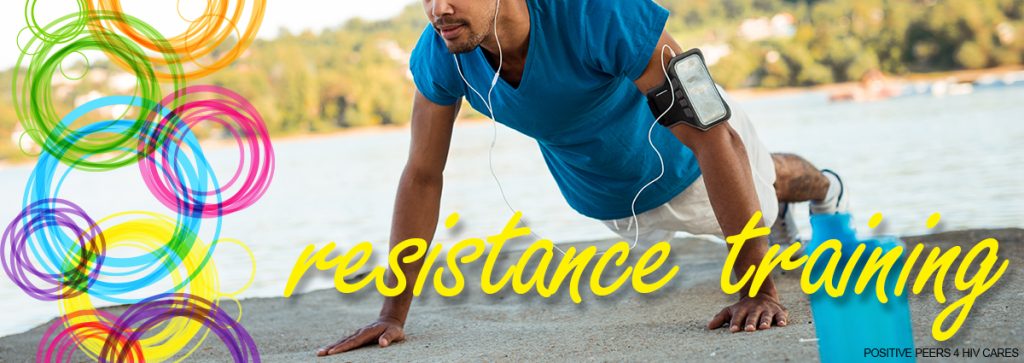
Do more resistance training
Resistance training helps prevent the muscle loss some people experience when they have HIV.
There’s a whole category of resistance exercise called “bodyweight training.” It means weightlifting without barbells, dumbbells, kettlebells or any of that heavy machinery they have at the gym.
The idea is this: Your body already weighs at least a hundred pounds, right? That’s plenty to lift right there. You don’t have to pump iron. You already do the most basic bodyweight-training move: Walking uphill and going upstairs. Simply walking on hills and taking the stairs instead of the elevator or escalator can get you going with bodyweight training.
These are some common bodyweight exercises:
- Lunge: Lowering your body onto your legs, with one leg out front and the other pushed in back. An advanced form is a walking lunge, but don’t try it till you’ve mastered the basic movement.
- Push-ups: Lying flat and using your arms to push up from the ground. The standard motion keeps the body flat and pivots from the toes — but you can pivot off your knees if the toe method is too hard.
- Step-ups: Do these on steps at the bottom of a slide at the park. Just step up with one foot, then step back. Then step up with the other foot.
- Squat: A squat is a simple bending-down motion that works your upper-leg muscles. An advanced version is a squat jump.
- Triceps dip: You can also do this one on a slide or park bench. With your back to the bench or slide, dip down with your arms, with your legs out in front of you.
- Plank: This one works your abdomen by locking your whole body in a flat plane and holding it above the ground for a while, like 15 to 60 seconds.
These moves need to be done correctly to avoid hurting yourself. Go to YouTube and search, for example, on “perfect push-up form” to find some videos explaining how to do each of these moves.
Resistance training should be done in sets with a break in between. Start with an easy set with five to seven repetitions, take a short rest, then do another five to seven reps. Three or four sets should be plenty with any given exercise.
Always take it slow with resistance training and work your way up to more effort over time. And be sure to give your body time to recover. If you’re hurting the day after resistance training, wait a couple of days till the soreness goes away before trying it again.

Listen to your body; do what you enjoy
Pain is your body’s way of telling you to back off, get some rest and let healing happen. The best way to stick with exercise is finding stuff you enjoy doing. Dancing, for example, is one of the best forms of exercise!
You can’t go wrong on nature hikes; the hills and trails add extra challenges you can’t get on the sidewalk in town.
And be sure to mix things up. Variety keeps your exercise interesting and motivates you to keep doing it.
So, go ahead, get a move on. Why be moody when you can shake your booty?
Related Blogs:
